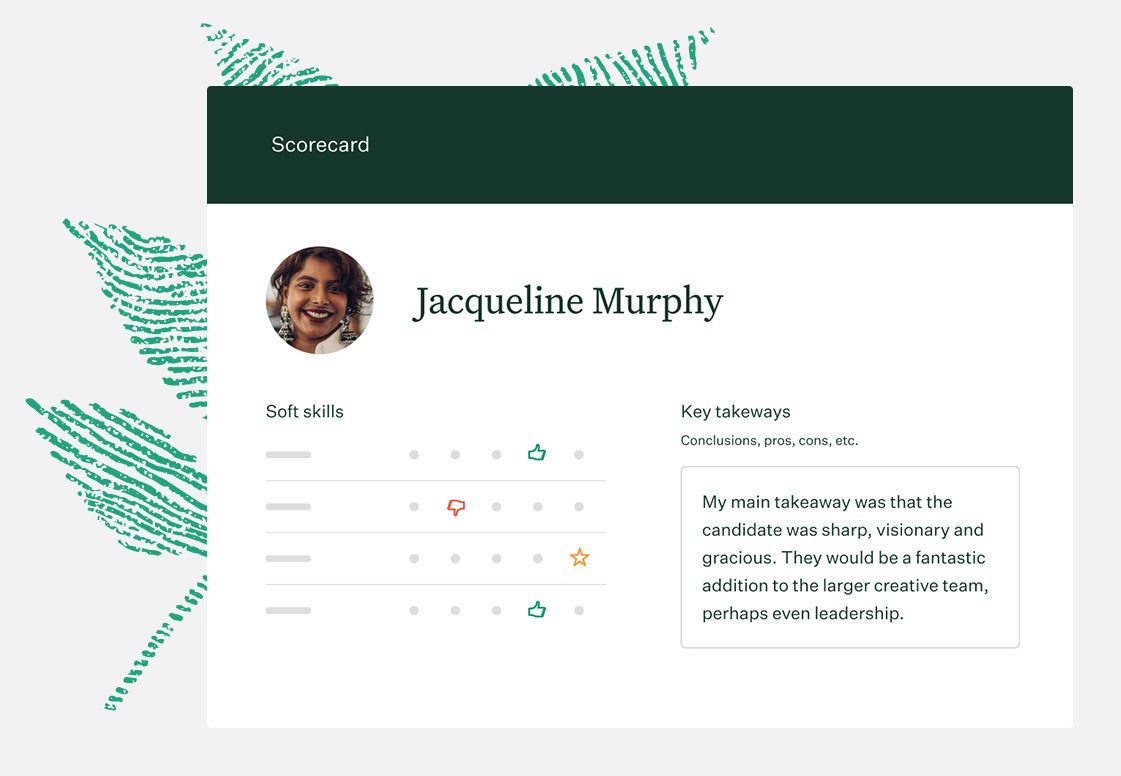How to conduct an interview: Back to basics

4 mins, 54 secs read time
You’ve brought some amazing candidates into your pipeline, and now it’s time for the interview that will determine the candidates’ fate and the future of your team. No big deal.
Not quite sure how to conduct an interview? Have no fear – we’re here to provide you with tips that will allow your interviews to run smoothly and effectively to provide a stellar experience for both candidates and interviewers (all while helping to reveal the right candidate for the role).
The impact of a bad interview
A bad interview might be described as one where the interviewer is scattered, there’s an unsavory smell in the interview room or any number of faux pas that might happen on a bad date occur. Seemingly minor setbacks can actually have major effects.
The most obvious effect relates to talent pools. Yes, someone you’ve rejected may not apply again, but if they take to Glassdoor to leave a review, other candidates may be discouraged from applying, too.
Additionally, according to a survey from CareerArc, 64% of candidates say that a poor interviewing experience would make them less likely to purchase goods from that employer. That means bad interviews are quite literally bad for business.
So there’s no choice but to provide an exceptional process if you want to build the best teams and – if you’re a B2C company – keep your consumer base.
Best practices on how to conduct an interview
Before the interview
Align with the hiring manager on the needs of the role
Make an interview plan with the hiring manager and create interview questions that are aligned with the needs for the role. We recommend hosting a role kick-off sync to get everything squared away. You should also discuss who should be on the interviewing schedule – who needs to meet this person to be able to make a decision?
Create the right (and use the same) questions
Prepare the same interview questions for every candidate interviewing for the role. And make sure they’re the right ones.
If we could give you one interviewing tip here at Greenhouse, we’d say this: Shy away from the infamous ‘So, tell me about yourself’ discussion point, and start asking the right questions.
Generi Talens, Associate Recruiter, Greenhouse Software
Vague questions can cause the candidate to veer off-course, or waste time revealing things that may not uncover their true ability or fit for the role.
Instead, work with the hiring manager to build a set of standardized questions that are aligned with the needs of the role. For example, if you know you’re hiring a Communications Manager, and great communication is a required skill, you might ask something like: “Describe a time when your communication skills made a difference in a situation. What was it about your communication skills that helped?”
If you’re using a tool like Greenhouse, be sure to add these questions to your candidate scorecard of desired attributes.
Follow a schedule
You’ve most likely already done your initial application review, finished the recruiter phone screens and reviewed any take-home tests. As you prepare for the onsite interview, make sure you stick to a schedule that all interviewers are aware of. Here’s a breakdown of what the onsite interview day might look like:
- Office tour and product demo | 15 minutes
- Culture add interview | 30 minutes
- Collaboration interview (with potential teammates) | 30 minutes
- Coffee chat | 30 minutes
- Technical interview | 30 minutes
- Hiring manager interview | 1 hour
- Recruiter check-in | 15 minutes
During the interview
Know who you’re talking to
You’re most likely meeting with several candidates – the first step is to know who is who. Review the role’s job description and each candidate’s work history just before your meeting, that way you’ll have a good understanding of who they are and the conversation can flow more naturally.
Then be sure to introduce yourself (name, team, role) and set the agenda for the interview while mentioning that you’ll leave time for questions at the end of the interview.
Take notes
This is probably the most important thing you can do. Reducing bias is absolutely crucial for great hiring, and it starts with ensuring you’ve got the important facts to refer back to. If you try to rely solely on memory, you may subconsciously give the candidate a thumbs up based on the fact that you both enjoy Harry Potter. Sure, you know they’re a Ravenclaw according to their Pottermore quiz, but can they effectively execute PR campaigns with external agencies?
Just be sure to let the candidate know that you’re taking notes for their benefit, and not seemingly disengaged while they’re speaking.
After the interview
Fill out your scorecard immediately
Apply your effective note-taking and fill out your candidate scorecard immediately after the interview. Explain your choices with as much detail as possible. If it comes down to two top-tier candidates, you’ll need as much information as possible to make the right decision.

Have a debrief meeting with all interviewers
Finally, since you most likely have multiple interviewers and stakeholders involved in this process, host a debrief meeting to discuss all of the candidates. Who can you eliminate based on collective scorecard alignment, and who do you need to discuss further?
This conversation allows all interviewers to voice their pros and cons, to help narrow down who will move forward with an executive interview – or receive an offer.
Elevating your interviewing to a best-in-class process can certainly be a challenge, but with practice and great recruiter-hiring manager alignment, you can start building the teams you’ve always dreamed of.
Looking for the best tips on how to review candidate feedback post-interview? Learn some of the most common round-up successes and pitfalls here.
Learn now